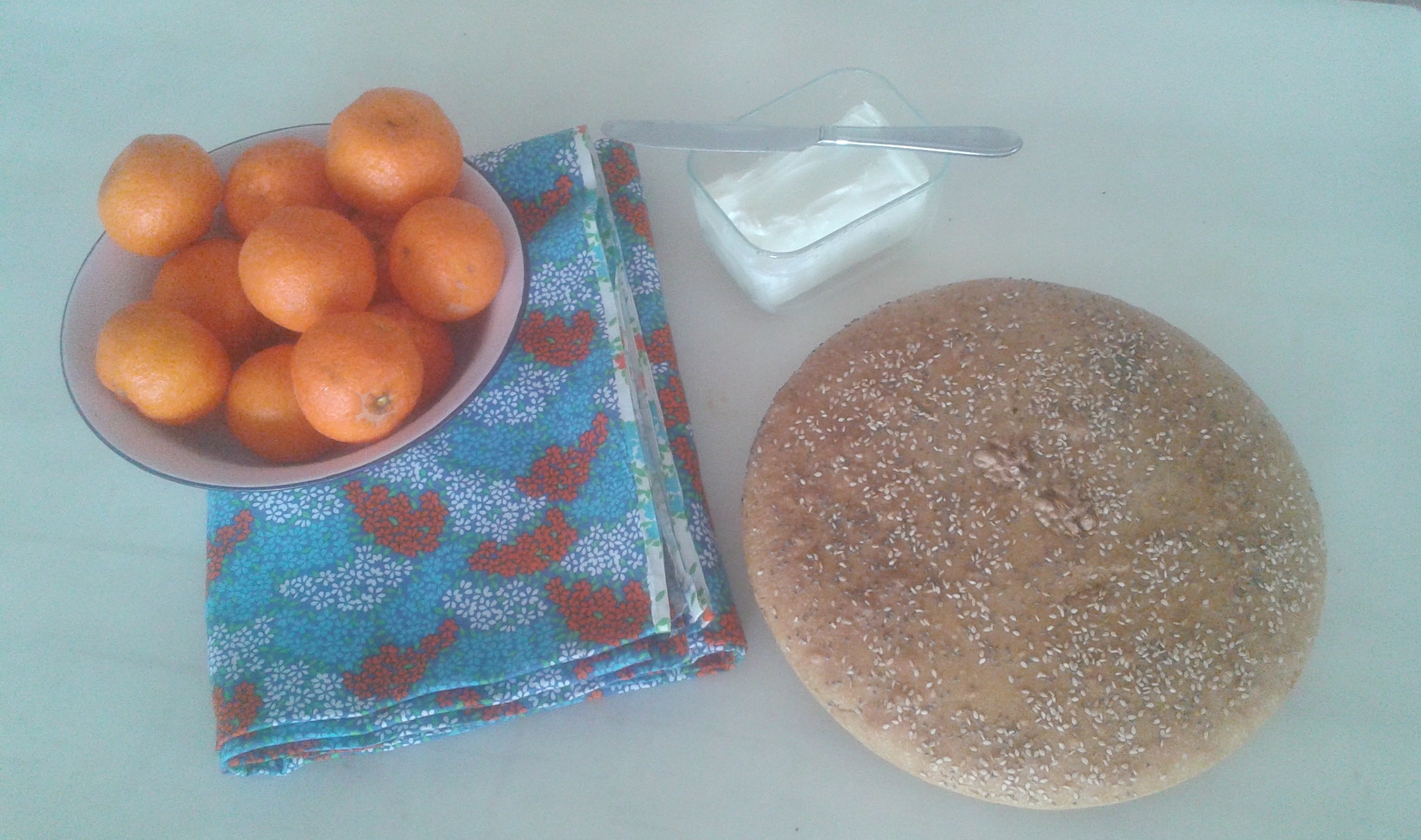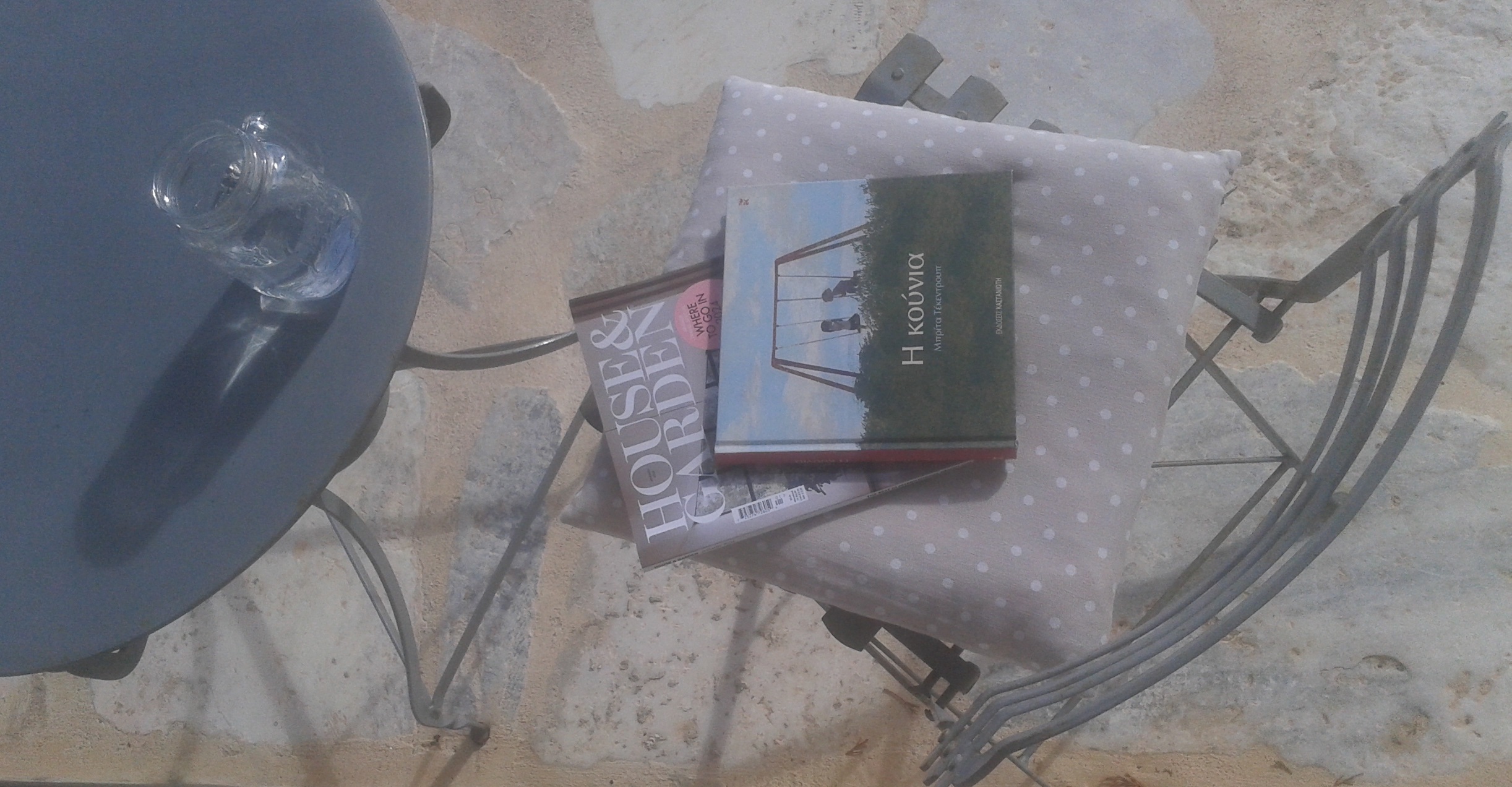Bread and poetry
“Our days are making their way towards a little bread and a lot of sunshine.” From Our Land by poet Yannis Ritsos
“Bread, you rise from flour, water and fire.
Dense or light, flattened or round, you duplicate the mother’s rounded womb, and earth’s twice-yearly swelling.” From Οde to Βread by poet Pablo Neruda
“The wheat field needs clouds and sunshine. So in this slice of bread there is sunshine, there is cloud, there is the labor of the farmer, the joy of having flour, and the skill of the baker and then—miraculously!—there is the bread. The whole cosmos has come together so that this piece of bread can be in your hand.” From How to Eat by Thich Nhat Hanh
“The coffee was boiling over a charcoal fire, and large slices of bread and butter were piled one upon the other like deals in a lumber yard.” Charles Dickens
“Crawling at your feet,’ said the Gnat (Alice drew her feet back in some alarm), `you may observe a Bread-and-Butterfly. Its wings are thin slices of Bread-and-butter, its body is a crust, and its head is a lump of sugar.’ Lewis Carroll, Through the Looking-Glass and What Alice Found There

This morning as I kept an eye on the homemade bread in the oven I thought of how bread, in its many forms and flavors, has been a basic means of sustenance in every culture and country around the world since the dawn of the Neolithic age and the spread of agriculture. There is evidence of bread being made in Egypt some 10,000 years ago. In Ancient Greece they had a demigod, Deipneus, whose name derives from the Greek word δείπνο that means dinner, who prepared meals and above all bread. I also thought about how bread has not only been a staple food across time and place, but has also been used as a metaphor and symbol in literature, poetry, visual arts, religion, politics and revolutions.
BREAD – EDUCATION – FREEDOM
In Greece, for instance, the slogan: BREAD-EDUCATION-FREEDOM was a trademark of the Polytechnic rebellion in 1973, the uprising of the students, that shook the seven-year dictatorship, and which after the tragic events in Cyprus collapsed in the summer of 1974. The slogan however, was not the exclusive invention of the anti-dictatorship student movement in Greece. Similar slogans like “Bread and Freedom” can be traced back to the French Revolution and have since acquired transnational dimensions as they have spread to Europe, Latin America, Africa, and elsewhere.
BREAD AND ROSES
In 1911 James Oppenheim wrote the famous poem Bread and Roses, which has since become associated with women’s battles for equality and Women’s Day. The poem was inspired by a speech by Helen Todd, a suffragist and worker’s rights activist, and is associated with The Lawrence strike, often referred to as the “Bread and Roses” strike or the “strike for three loaves.”
A short extract from James Oppenheim’s poem, Bread and Roses
“…….. As we come marching, marching, we battle, too, for men—
For they are women’s children and we mother them again.
Our days shall not be sweated from birth until life closes—
Hearts starve as well as bodies: Give us Bread, but give us Roses.
As we come marching, marching, unnumbered women dead
Go crying through our singing their ancient song of Bread;
Small art and love and beauty their trudging spirits knew—
Yes, it is Bread we fight for—but we fight for Roses, too……”
In the 70s the poem was set to music by Mimi Farina, Joan Baez’s sister. Inspired by the poem she named the nonprofit that she founded in 1974 Bread and Roses. Farina was conscious of the ways that art can benefit and heal, and along with musician friends she gave musical performances for isolated youth, adults and seniors in hospitals and institutions.
BREAD
“Food is strength, and food is peace, and food is freedom…..” John F. Kennedy
In her short story, Bread, Margaret Atwood explores the themes of perception, connection, control, oppression, greed, empathy and compassion, and change. Atwood repeats the word ‘imagine’ in each paragraph in an attempt to get the reader not only to reflect on an important issue, a life and death dilemma, but to also feel and almost become the other person, perhaps hoping that by doing so readers will become aware of what it is like to have enough bread or have no bread at all. Atwood asks us to imagine a piece of bread, a famine, a prison scene, an encounter between two sisters, one wealthy, one destitute. Each paragraph concerns difficult decisions that the characters – people have to make.
The first paragraph describes abundance and waste both through the variety of bread available to the reader and the different ways one can choose to eat it. The story begins: “Imagine a piece of bread. You don’t have to imagine it, it’s right here in the kitchen, on the breadboard, in its plastic bag, lying beside the bread knife. The bread knife is an old one you picked up at an auction; it has the word BREAD carved into the wooden handle. You open the bag, pull back the wrapper, cut yourself a slice. You put butter on it, then peanut butter, then honey, and you fold it over. Some of the honey runs out onto your fingers and you lick it off. It takes you about a minute to eat the bread. This bread happens to be brown, but there is also white bread, in the refrigerator, and a heel of rye you got last week, round as a full stomach then, now going moldy. Occasionally you make bread. You think of it as something relaxing to do with your hands.”
The author is urging us to think of the parts of the world that have plenty in contrast to those that have nothing. This becomes more salient in the second paragraph of the story when Atwood brings in a young boy who is starving and who faces the dilemma of eating the one and only slice of bread available, sharing it or giving it all to his sister, who is also starving and much weaker than him. She writes: “Imagine a famine. Now imagine a piece of bread. Both of these things are real but you happen to be in the same room with only one of them. Put yourself into a different room, that’s what the mind is for. You are now lying on a thin mattress in a hot room. The walls are made of dried earth, and your sister, who is younger than you, is in the room with you. She is starving, her belly is bloated, flies land on her eyes; you brush them off with your hand. You have a cloth too, filthy but damp, and you press it to her lips and forehead. The piece of bread is the bread you’ve been saving, for days it seems. You are as hungry as she is, but not yet as weak……”
The third paragraph /scene, is set in a prison and has a strong theme revolving around oppression and control, in this case through hunger. Bread here is used as a bargaining means. Through hunger the captors have complete control over the prisoner. The reader is asked to imagine being the prisoner who is forced to choose between betraying comrades and confessing to what the captors want in order to survive by receiving a piece of bread or choosing to die. Atwood writes: “The bread they offered you is subversive, it’s treacherous, it does not mean life…”
In the fourth paragraph of the story Atwood appears to be drawing on the Grimm Brothers’ German folk tale, God’s Food, to highlight how those who have plenty can be heartless and greedy even if those asking are their own kin, In this case, a starving sister and her children. Atwood seems to be hinting to the loss of ability to imagine being in another’s shoes and to a disconnection from one’s humanity and feelings of compassion. There is more to this short story than my brief commentary here, and one can easily find the story online, for further exploration of its themes and appreciation of its power.

I would also like to share a poem by Carl Sandburg and a new illustrated book for children and adults by author and illustrator Britta Teckentrup, which both share a common thread, that of change and how nature takes over, to erase, to bury, and to bring forth new life.
THE SWING
The swing on a hill overlooking the sea is the place to swing with your friends and beloved grandparents, meet people and make new friends, give a kiss or part ways, but also a place to be alone with your thoughts or feelings. It is a place of joy and laughter, a place to party and have picnics, but also a place, where loss is experienced, goodbyes are said and tears are shed. It is a place to daydream, to experience the sun and the night sky and to feel as if you are one with the ocean. As the years pass, people pass away and children grow up and dream about the future and new places. Some come back as parents.
The Swing by Britta Teckentrup is about the passage of time and all that it brings, joy and contentment, sadness and loss. It feels like a meditation on life and change. The swing is the centre of the story. It remains in its place surviving hot summers and snowy winters and suffering the ravage of weather and time and the natural world, while lives and stories evolve around it. And then there comes a time when the swing has almost been erased by vines, branches and grass.
GRASS
Carl Sandburg’s poem Grass is about war and how those lost in battle are soon forgotten as time and nature erase the traces of battlefields. In the poem grass buries and covers the bodies and the many history-soaked battlefields around the world, and thus, grass becomes a symbol of both life after death and destruction, and of erasure and oblivion of history.
Pile the bodies high at Austerlitz and Waterloo.
Shovel them under and let me work // I am the grass; I cover all.
And pile them high at Gettysburg // And pile them high at Ypres and Verdun.
Shovel them under and let me work.
Two years, ten years, and passengers ask the conductor:
What place is this? // Where are we now?
I am the grass. // Let me work.
